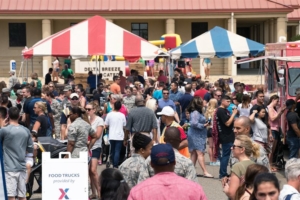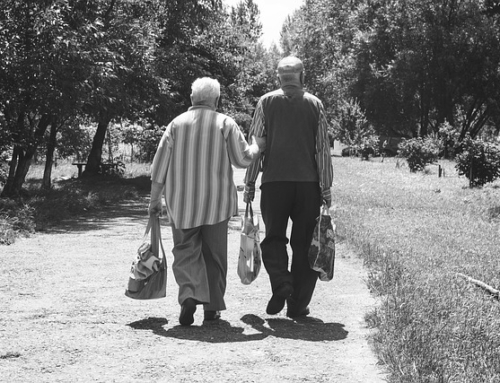By Eddie Pipkin
Churches plan community events on a regular basis. That is, they plan events that they refer to as “community events.” In reality, many of these events—if not most of them—are actually  congregationally-focused events to which the surrounding community is welcomed. They are really our internally-focused events—centered around our ministries and programs—which we enthusiastically invite new people to attend. These events have long been a healthy part of the identify of congregations. Indeed, lots of churches are known in their neighborhoods by annual events, held on their campus, which have built a recognizable tradition for which the congregation is known and which the neighborhood eagerly anticipates (classic fall festivals and trunk-or-treats, sunrise services, and garage sales are examples). But what moves a “community event” from the classic model to a true embrace of the community?
congregationally-focused events to which the surrounding community is welcomed. They are really our internally-focused events—centered around our ministries and programs—which we enthusiastically invite new people to attend. These events have long been a healthy part of the identify of congregations. Indeed, lots of churches are known in their neighborhoods by annual events, held on their campus, which have built a recognizable tradition for which the congregation is known and which the neighborhood eagerly anticipates (classic fall festivals and trunk-or-treats, sunrise services, and garage sales are examples). But what moves a “community event” from the classic model to a true embrace of the community?
First, let’s define the classic “community event” and what keeps it in quotation marks. Such an event might have these characteristics:
- It is principally designed as a fund raiser. We may have some excellent activities planned, and they may be entertaining for the community, but the primary purpose of the event (from the perspective of those of us designing it and executing it) is a way to raise funds for our programs and congregational ministries.
- It is principally designed as a way to recruit new members. The whole event (from the perspective of those us designing it and executing it) is a means of drawing people onto our church campus so that we can introduce them to who we are and encourage them to return and become part of our congregation.
- It is an attempt to introduce and broaden a particular existing ministry. This would include discipleship events (like an Easter event that helps kids learn about the narrative of Holy Week) or a youth or children’s event that markets itself to neighborhood youth and children as a pathway to get them to sample (and hopefully join) our youth and children’s ministries.
Again, to reiterate, there is nothing wrong with any of these events. But I like to refer to them, not as “outreach” events, the word we have traditionally used to describe them in leadership circles, but instead as “inreach” events. They are designed in good faith to bring people into our existing community. True outreach, however, moves beyond our walls (either literally or metaphorically) to engage the community where its needs lie and makes us available to meet those needs as agents of God’s grace.
Here is a worthy experiment for you and your team: go to this web article on “52 Ideas for Your Church to Engage the Community This Year” and see which of the ideas—all great ideas—qualify as “outreach” and which as “inreach.” Similarly, this article from the Lewis Center also contains community engagement ideas—look them over and give some thought to the ways in which they serve the community in a pure sense versus the ways in which they are designed as recruitment activities (and is it possible to do both?).
One of the surest ways to revive our sense of outreach and community connection is to host events and activities that are located beyond our church campus (literally outside our walls). But even in those cases, we should be careful to analyze our motives and goals. For instance, Girl Scouts selling cookies outside the local grocery store are serving a worth community cause, but they are not doing outreach. That’s straight-up fund raising.
Here are some criteria to think about when considering events and filtering them through an outreach lens:
- Is this event serving a greater need of the community? Are we in touch with where the needs are in the community around us and investing our time, energy, and talent in building events that address those needs?
- Are we partnering with other community groups in this event or are we asking members of the community solely to support our ministries and mission? This is a great way to gauge the answer to the first question and to take an honest assessment of how expansive our embrace of the community really is. Are we partnering with other worthy community groups in ways that help them reach their own goals or are we just hoping to have them work with us to help us meet ours? The sweet spot, of course, from a community perspective, are events which do both.
- Are we charging people to participate? Are we creating events that have tiers of participation based on their affordability? If it is necessary to charge fees for participation, what do those fees serve? Are they promoting goals that serve the greater community or are they paying for the needs of our internal community?
Some of the ways churches and their facilities have long been a part of the fabric of local communities will continue to be relevant:
- Providing space for community groups to meet (particularly help groups like AA).
- Providing civic space (serving as polling places, hosting civic groups).
- Serving as locations for missional projects that serve the community, such as food pantries and counseling centers.
- Providing after-school programs and tutoring ministries.
Some of the ways that churches and their facilities can be a part of the fabric of local communities is evolving. We are encouraged to think creatively in our pursuit of new ideas, as well as re-thinking old ideas:
- Providing space for community sports and recreational activities (one of the ideas kicked around in a podcast on this topic).
- Expanding our view of affinity groups to provide more space for those with hobbies and interests beyond Bible Studies and traditional men’s or women’s groups.
- Serving as a nexus for rigorous engagement of social justice issues (through forums, educational sessions, and outlets for exchanging ideas and perspectives).
- Making ourselves more of a center for entrepreneurial approaches to ministry that meet the people-caring needs of the local community.
- Providing space for the arts and the creative class and opening ourselves up to off-kilter happenings to break open the stereotype that church people are boring and defined by restrictions and rules.
These are all ways to build vibrant connections to the surrounding community that demonstrate our authentic interest in engagement with our neighbors. They promote diversity, generate energy, help people employ the gifts with which God has blessed them, and keep us from getting too comfortable. They provide lots of opportunities for grace to be lived out.
Nearly any event that we are hosting that currently functions more as an “inreach” can be re-imagined to promote more features of “outreach”:
- A pancake breakfast or spaghetti dinner which was designed solely as a fund raiser for the men’s group could be re-imagined as a way to invite shut-ins for a community meal.
- A fun run designed as a youth fund raiser could invite other community groups to participate as a way to also raise funds for their own needs with a focus on community service with a wider perspective.
- An Easter egg hunt open to the community could be tailored to families with special needs or to honor and celebrate single parents.
Much of this re-imagining is dependent on how much time we have spent seriously getting to know the needs of the communities in which we live and work. How do you think your local church is doing with the events and activities in which you invest your time, energy, and resources? Are they best described as “inreach” or “outreach”? How does the greater community in which you are located describe your ministry? Share your own stories and challenges with us in the comments section. And think about the ways in which Jesus modeled leadership on these topics.







Leave A Comment